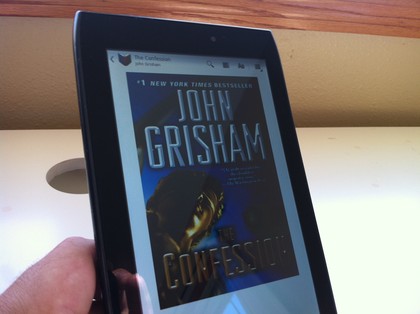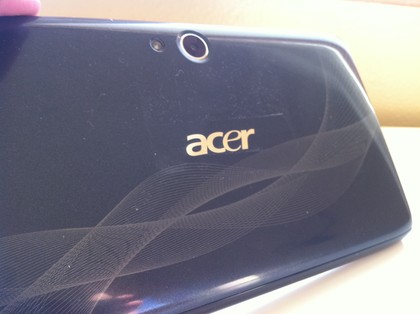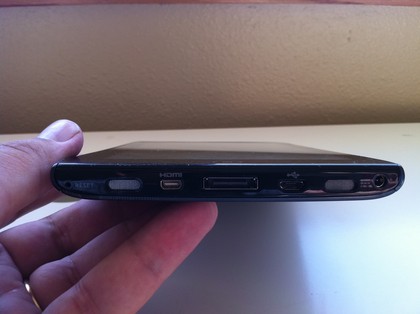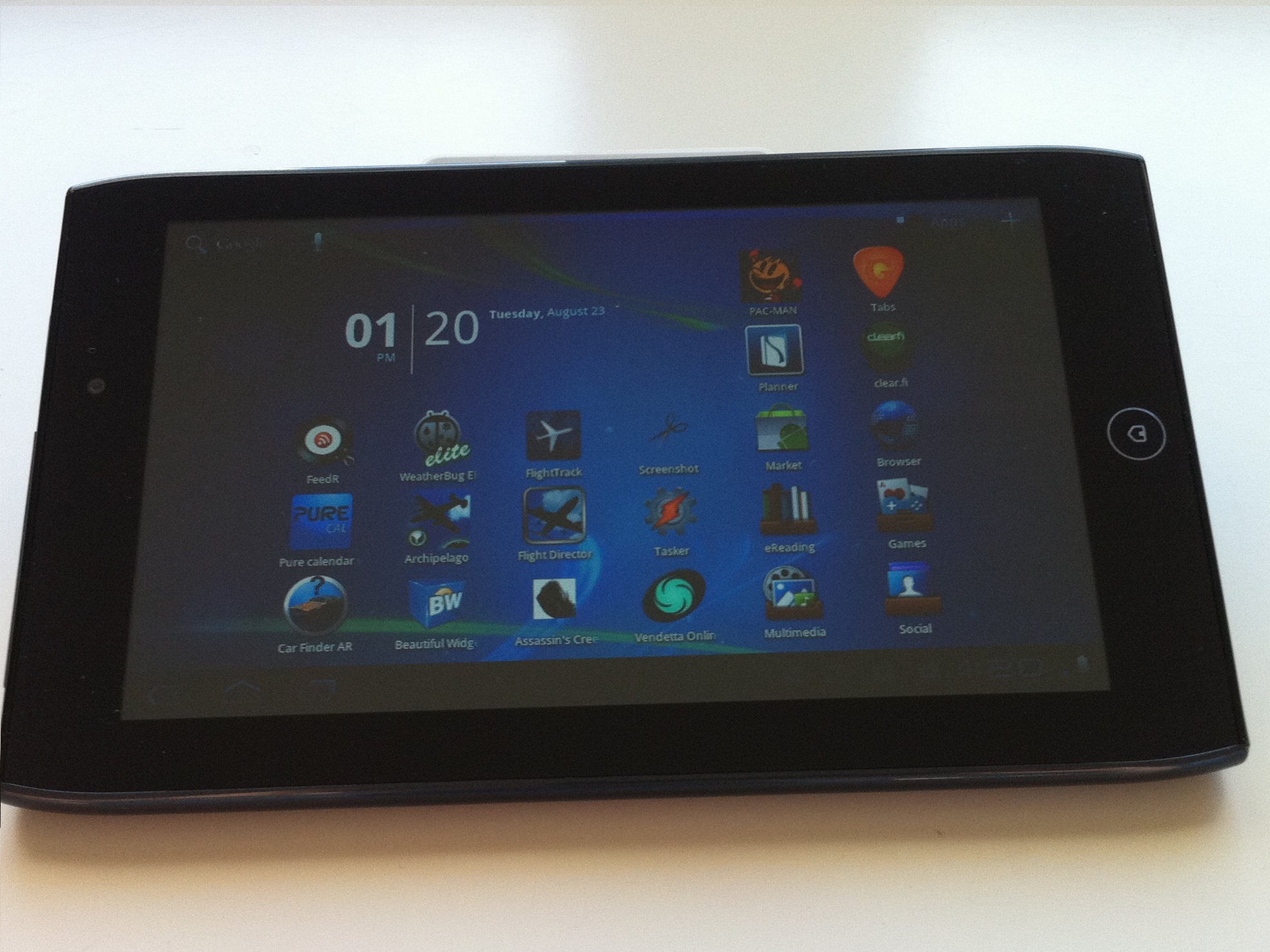TechRadar Verdict
Pros
- +
Small and compact
- +
Good e-reader
- +
Latest Android OS
- +
Re-sizes smartphone apps
Cons
- -
Average screen
- -
Poor battery
- -
Boring design
Why you can trust TechRadar
Life is all about choices and trade-offs. With the Acer Iconia Tab A100, the main compromise is in size. This 417g tablet, the first to run the Android 3.2 operating system, is too big to be a smartphone and too small – at a 7-inch screen size – to watch movies on. It fills a small niche for those who want an ebook reader that also runs apps.
For some, the form factor might be just about right. While the HTC Flyer is now showing signs of age, both tablets fit into the same mould: both offer a compact 7-inch screen, the Tegra 2 processor running at 1GHz and 1GB RAM. The Acer Iconia Tab A100 is actually 3g lighter, but you won't notice.
However, there are a few differences between the two pocket-sized tabs. We say pocket-sized with a smirk – you really need pretty large pockets for that to work.
The Acer Iconia Tab A100 runs Android 3.2 out of the box, whereas most HTC Flyers have to be updated to 3.2.

This version of the operating system, named Honeycomb, supports screen scaling to run apps made for smartphones. However, on the 7-inch screen the resizing for smartphone apps isn't that noticeable.
The Acer Iconia Tab A100 also provides a few interesting apps. One is called Planner and it presents a handy all-in-one view of recent news, your email, calendar and notes.
Like the Acer Iconia Tab A500, the A100 uses an app categorisation system for grouping apps into bins for social networking, ebooks, games and so on. Sure, it's nothing more than an extra home screen system, and doesn't look that great, but at least we're not talking about plain vanilla Android here.

The Acer Iconia Tab A100 also provides a 5MP rear-facing camera and a 2MP front-facing chat camera. The HTC Flyer's chat camera is only 1.3MP.
Most critically, the HTC Flyer uses a single-core CPU while the Acer Iconia Tab A100 stays current with recent 10-inch tabs by offering the Tegra 2 dual-core chip.
In truth, most of the other differences compared to the HTC Flyer are cosmetic, or related to usability and the screen technology used on the two tablets. However, the Acer Iconia Tab A100 gets the nod over the HTC Flyer if only for including a new version of Android.
And there's a smart fold-open case for the Acer Iconia Tab A100 where you can set it almost vertical on a desk.

We should mention the BlackBerry PlayBook, even though many tablet users have forgotten it exists. There are still no strong apps on it to speak about, but the PlayBook also has a 7-inch screen. We can't recommend it unless you really need the business security features or already use a BlackBerry smartphone. Both the HTC Flyer and the Acer Iconia Tab A100 are better buys because of the boatload of Android apps available.
Oh, and there's still the first-gen 7-inch Samsung Galaxy Tab, which shares some similarity in size but uses the older Android 2.2 Froyo operating system. It enables you to rent movies, but otherwise its apps are all designed for smartphones.
The Acer Iconia Tab A100 8GB model we tested costs only $330 in the US, and £299.99 in the UK. The HTC Flyer is priced at £480. That makes the A100 the better buy. But the reality is that 10-inch tabs aren't that much more expensive, not that much heavier – the Samsung Galaxy Tab 10.1 is only 148g heavier than the A100 – and better suited to watching movies and playing games.
John Brandon has covered gadgets and cars for the past 12 years having published over 12,000 articles and tested nearly 8,000 products. He's nothing if not prolific. Before starting his writing career, he led an Information Design practice at a large consumer electronics retailer in the US. His hobbies include deep sea exploration, complaining about the weather, and engineering a vast multiverse conspiracy.

